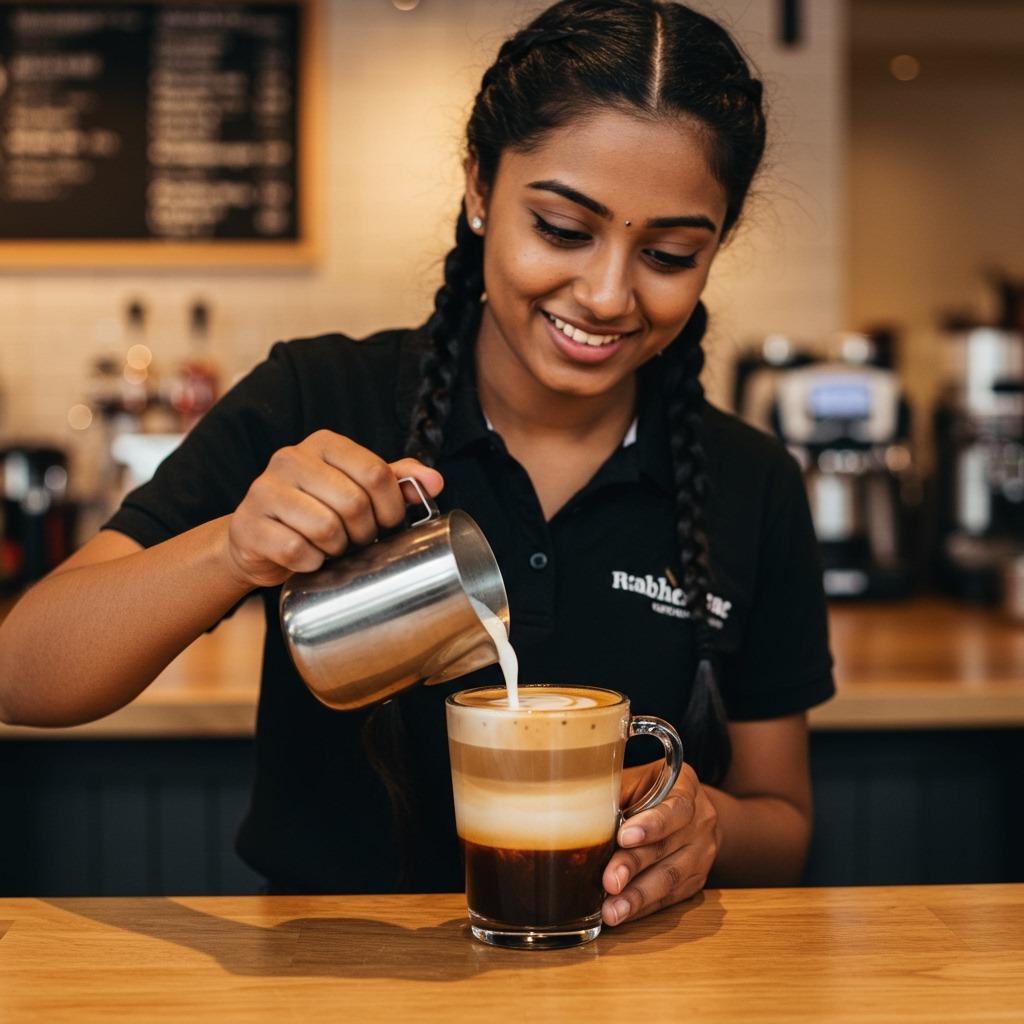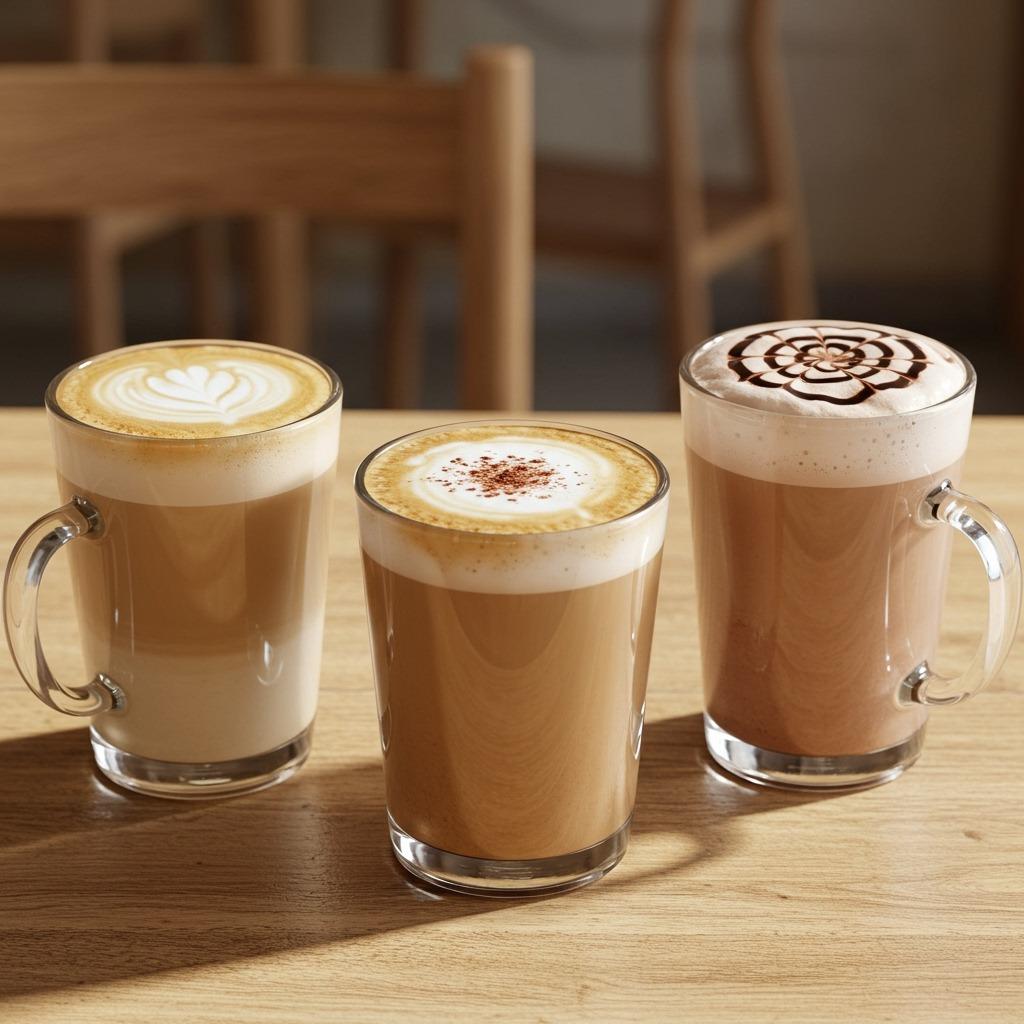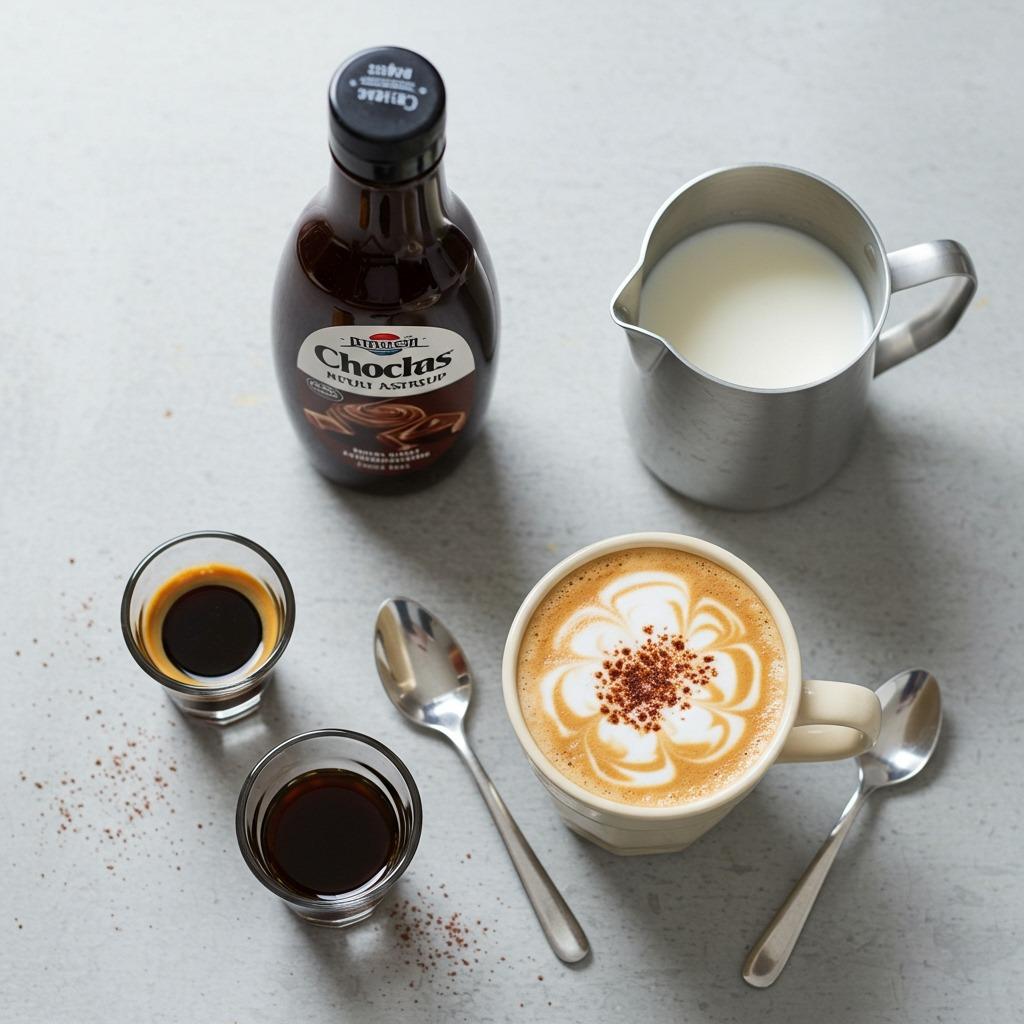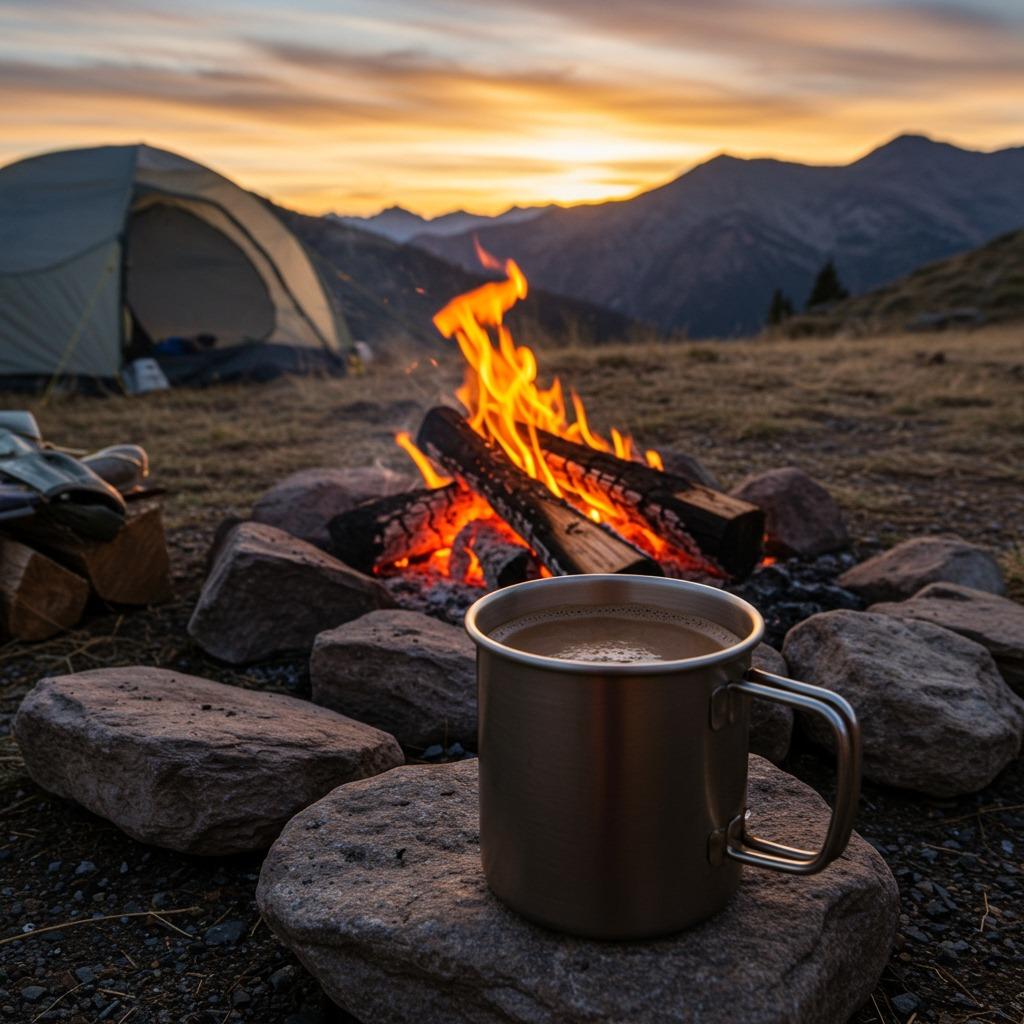I still remember the first time I ordered a “mocha” at a tiny café in Sedona after a challenging morning hike. The barista asked if I wanted “coffee or the drink,” and I stared blankly, realizing I had no idea what I’d actually ordered. That moment taught me something important about coffee culture—mocha isn’t just one thing, and understanding what you’re getting can make the difference between a perfect post-hike treat and a confusing caffeine experience.
Mocha coffee represents one of the most beloved combinations in the coffee world: the marriage of rich espresso and indulgent chocolate. Whether you encounter it as a café beverage, a flavor descriptor, or even a type of coffee bean, mocha brings together two of humanity’s favorite flavors in ways that have satisfied coffee drinkers for centuries.
What Is Mocha Coffee?
Mocha coffee is primarily a chocolate-flavored coffee beverage made by combining espresso, steamed milk, and chocolate in the form of syrup, powder, or melted chocolate. Also known as caffè mocha or mochaccino, this drink essentially transforms your regular coffee into a liquid dessert that maintains the caffeine kick of espresso while delivering the comforting sweetness of chocolate.
The term “mocha” can refer to several related concepts in coffee culture. Beyond the popular café drink, mocha also describes a specific variety of coffee bean originally grown in Yemen, and it’s used as a general flavor descriptor for anything combining coffee and chocolate elements.
The Basic Components
A traditional caffè mocha contains four essential elements:
- Espresso shot (or strong coffee) as the base
- Chocolate in syrup, powder, or melted form
- Steamed milk to create the creamy texture
- Optional toppings like whipped cream, cocoa powder, or cinnamon
The proportions typically follow this pattern: one shot of espresso, 1-2 tablespoons of chocolate flavoring, and 4-6 ounces of steamed milk, though personal preferences and café variations can significantly alter these ratios.

Origins and History
The name “mocha” traces back to the ancient port city of Mocha (Al Mokha) in Yemen, which served as the major marketplace for coffee beans from the 15th to 18th centuries. This bustling trading center became synonymous with high-quality coffee, and the name eventually attached itself to various coffee-related products and preparations.
Interestingly, the chocolate-coffee combination we know today as mocha coffee developed much later than the original Yemeni coffee trade. The modern caffè mocha emerged as European coffee culture evolved, combining the New World’s chocolate with the Old World’s coffee traditions.
The Bean Connection
Original mocha coffee referred specifically to coffee beans grown in the mountainous regions around the port of Mocha. These beans, known for their distinctive wine-like flavor with hints of chocolate, created a natural association between “mocha” and chocolate notes in coffee. Today, true Yemeni Mocha beans remain rare and expensive, prized by coffee connoisseurs for their unique flavor profile.
How Mocha Differs from Other Coffee Drinks
Understanding mocha’s place in the coffee family helps clarify what makes it special compared to other popular beverages:
Mocha vs. Latte
While both drinks contain espresso and steamed milk, lattes focus on the milk’s texture and the espresso’s flavor, creating a smooth, coffee-forward drink. Mochas add chocolate as a primary flavor component, making them sweeter and more dessert-like. A latte showcases coffee; a mocha balances coffee with chocolate indulgence.
Mocha vs. Cappuccino
Cappuccinos emphasize the contrast between strong espresso and thick, dry foam, creating distinct layers and a more intense coffee experience. Mochas integrate all components into a harmonious blend, with chocolate softening the espresso’s intensity and steamed milk providing creaminess rather than foam structure.
Mocha vs. Hot Chocolate
The key difference lies in the coffee component. Hot chocolate is essentially chocolate and milk without coffee, while mocha adds espresso to create a caffeinated version. Think of mocha as “hot chocolate with a coffee attitude” or “coffee with chocolate personality.”

Types of Mocha Variations
The basic mocha concept has spawned numerous creative variations, each offering a unique twist on the chocolate-coffee theme:
White Mocha
Made with white chocolate instead of dark or milk chocolate, white mochas offer a sweeter, creamier flavor profile with less cocoa intensity. The white chocolate provides richness without the bitter notes found in regular chocolate, creating a more dessert-like experience.
Black and White Mocha
Also called marble mocha, tuxedo mocha, or zebra mocha, this variation combines both regular and white chocolate syrups, creating visual appeal through contrasting colors and complex flavor layering. Each sip delivers a different chocolate experience.
Iced Mocha
Perfect for warm weather, iced mochas use cold milk and ice instead of steamed milk, often blended to create a frappé-style consistency. The preparation method changes but the flavor combination remains the same: coffee, chocolate, and milk in refreshing form.
Mochaccino
Technically, a variation emphasizing double espresso shots with either steamed milk and cocoa powder or chocolate milk. Some recipes treat mochaccino and mocha as interchangeable terms, though purists argue mochaccinos should be stronger in coffee flavor.
Making Mocha Coffee at Home
Creating café-quality mocha at home requires understanding the balance between coffee strength, chocolate richness, and milk texture. Here’s how to master the process:
Essential Equipment
Minimum requirements:
- Espresso machine, Moka pot, or French press
- Milk steamer or frother (manual alternatives work)
- Quality measuring tools
Preferred setup:
- Espresso machine with steam wand
- Burr grinder for fresh beans
- Digital scale for precise measurements
- Quality chocolate syrup or cocoa powder
Basic Recipe
Ingredients:
- 1 shot espresso (or ¼ cup strong coffee)
- 1-2 tablespoons chocolate syrup or unsweetened cocoa powder
- ½-¾ cup milk
- Optional: whipped cream, cocoa powder, cinnamon
Method:
- Prepare espresso using your preferred method
- Add chocolate to your serving mug
- Pour hot espresso over chocolate, stirring to combine
- Steam milk to create a microfoam texture
- Pour steamed milk into the coffee-chocolate mixture
- Top with desired garnishes
Pro Tips for Better Home Mochas
Chocolate selection matters: High-quality chocolate syrup or premium cocoa powder significantly impacts flavor. Avoid overly sweet commercial syrups that mask coffee notes.
Temperature control: Overheated milk loses its sweet flavor and smooth texture. Aim for 150-160°F for optimal results.
Ratio experimentation: Start with standard ratios then adjust based on personal preference. Some prefer a stronger coffee presence; others want more chocolate dominance.
Timing considerations: Combine chocolate and espresso first to ensure proper mixing before adding milk. Hot espresso helps dissolve cocoa powder more effectively than adding it later.

Nutritional Considerations
Understanding mocha’s nutritional profile helps make informed choices about when and how often to enjoy this indulgent beverage:
Calorie Content
Basic mocha (12 oz) contains approximately:
- 250-400 calories depending on milk type and chocolate amount
- 15-25g sugar from chocolate and natural milk sugars
- 10-15g fat from milk (varies with milk choice)
- 95-175mg caffeine from espresso
Healthier Modifications
Reduce calories:
- Use skim or plant-based milk alternatives
- Choose sugar-free chocolate syrup
- Reduce chocolate quantity gradually
- Skip whipped cream toppings
Boost nutrition:
- Add collagen powder for protein
- Use dark chocolate for antioxidants
- Choose organic, fair-trade ingredients
- Consider MCT oil for sustained energy (useful for hiking adventures)
Caffeine Awareness
Mocha’s caffeine content equals that of the espresso it contains, typically 95-175mg per serving. This amount provides substantial energy for outdoor activities while remaining within safe daily limits for most adults.
Mocha in Coffee Shop Culture
Different coffee shops approach mocha preparation with varying philosophies, from chain consistency to artisanal creativity:
Chain Store Mochas
Major chains like Starbucks standardize mocha recipes for consistency across locations. Their versions often emphasize sweetness and visual appeal, using specific syrup formulations and precise ratios. While predictable, these mochas may lack the complexity of artisanal versions.
Specialty Coffee Shop Approach
Independent cafés often create unique mocha experiences using:
- Single-origin chocolate from specific regions
- House-made chocolate syrups with custom spice blends
- Seasonal variations incorporating local ingredients
- Alternative milk options for dietary restrictions
Ordering Tips
When ordering mocha:
- Specify desired sweetness level
- Ask about chocolate type (dark, milk, white)
- Request modifications (extra shot, less sweet, specific milk)
- Inquire about seasonal variations or specialties
Mocha’s Role in Outdoor Coffee Culture
For outdoor enthusiasts, mocha offers unique advantages that make it particularly appealing during camping trips and hiking adventures:
Trail Energy Benefits
The combination of caffeine and natural sugars provides sustained energy ideal for physical activities. Unlike pure coffee, mocha’s chocolate content offers quick energy from sugars while caffeine provides longer-lasting alertness.
Comfort Factor
After challenging outdoor activities, mocha’s dessert-like qualities provide psychological comfort that plain coffee might not deliver. The chocolate element triggers endorphin release, enhancing the reward feeling after accomplishing difficult hikes or long camping days.
Versatility in Preparation
Mocha adapts well to outdoor brewing methods. Cowboy coffee can be enhanced with cocoa powder and powdered milk for a trail-friendly mocha experience. Instant coffee packets combined with hot chocolate mix create acceptable mochas when proper equipment isn’t available.

Seasonal Mocha Variations
Different seasons inspire unique mocha interpretations that complement weather and mood:
Winter Mochas
Cold weather calls for heartier preparations:
- Peppermint mocha with candy cane flavoring
- Spiced mocha incorporating cinnamon, nutmeg, or cardamom
- Mexican mocha with chili powder and vanilla
- Salted caramel mocha for indulgent warmth
Summer Adaptations
Hot weather demands cooler approaches:
- Iced mocha with cold brew base
- Frozen mocha blended with ice for frappé texture
- Coconut mocha using coconut milk for tropical flair
- Mint chocolate mocha for refreshing coolness
Holiday Specials
Coffee shops often create limited-time mocha variations celebrating specific holidays or seasons, incorporating flavors like orange for fall, gingerbread for winter holidays, or berry combinations for spring.
Storage and Ingredient Tips
Maintaining quality ingredients ensures consistently excellent home mochas:
Coffee Storage
Store espresso beans in airtight containers away from light and heat. Grind beans just before brewing for optimal flavor extraction. Consider buying smaller quantities more frequently rather than large amounts that lose freshness over time.
Chocolate Components
Syrup storage: Refrigerate opened chocolate syrup and use within the manufacturer’s recommendations. Homemade syrups typically last 2-3 weeks refrigerated.
Cocoa powder: Store in cool, dry places in sealed containers. Quality cocoa powder maintains flavor for 12-18 months when properly stored.
Fresh chocolate: If using melted chocolate bars, choose varieties with 50-70% cocoa content for balanced sweetness and chocolate intensity.
Troubleshooting Common Mocha Problems
Even experienced home baristas encounter issues when making mochas. Here are solutions to frequent problems:
Lumpy or Grainy Texture
Cause: Cocoa powder not properly dissolved, or chocolate syrup separated
Solution: Always combine chocolate with hot espresso first, stirring thoroughly before adding milk
Overly Sweet Result
Cause: Too much chocolate syrup or sweet milk alternatives
Solution: Reduce chocolate quantity gradually or balance with extra espresso shot
Weak Coffee Flavor
Cause: Insufficient espresso or chocolate overpowering coffee notes
Solution: Use stronger espresso base or reduce chocolate amount
Poor Milk Texture
Cause: Overheated milk or inadequate steaming technique
Solution: Monitor milk temperature and practice steaming technique for consistent microfoam
The beauty of mocha coffee lies in its versatility and universal appeal. Whether you’re enjoying a carefully crafted café version during a rest stop on your hiking adventures or preparing a simple camp version using camping cooking techniques, mocha represents the perfect marriage of comfort and energy that coffee lovers have cherished for generations.
From its ancient origins in Yemeni trading ports to modern café culture, mocha continues evolving while maintaining its core appeal: the magical combination of coffee’s complexity with chocolate’s indulgence. Understanding what makes mocha special—and how to prepare it properly—opens doors to countless variations and personal preferences that can enhance both daily routines and outdoor adventures.
Whether you prefer the convenience of café visits or the satisfaction of home preparation, mocha coffee offers endless opportunities for exploration and enjoyment, making it one of the most enduring and beloved beverages in coffee culture.
Frequently Asked Questions
Is mocha coffee or hot chocolate?
Mocha is both coffee and chocolate combined. It’s an espresso-based drink with added chocolate flavoring and steamed milk, making it distinct from both plain coffee and hot chocolate. Think of it as coffee with a chocolate personality or hot chocolate with coffee strength.
How much caffeine is in a mocha coffee?
A typical 12-ounce mocha contains 95-175mg of caffeine, equivalent to the espresso shot(s) used in preparation. This is similar to regular coffee but less than pure espresso shots. The caffeine content doesn’t change based on chocolate additions.
Can I make mocha coffee without an espresso machine?
Yes, you can make an excellent mocha using strong coffee from a French press, Moka pot, or even high-quality instant coffee. The key is using coffee that’s stronger than regular drip coffee to balance the chocolate and milk components properly.
What’s the difference between a mocha and a latte?
The main difference is chocolate. Lattes contain only espresso and steamed milk, focusing on coffee flavor and milk texture. Mochas add chocolate syrup or powder, creating a sweeter, more dessert-like drink that balances coffee with chocolate indulgence.
Is white mocha the same as regular mocha?
White mocha uses white chocolate instead of dark or milk chocolate, creating a sweeter, creamier flavor without the bitter cocoa notes. Both contain the same coffee and milk base, but white chocolate provides a distinctly different taste experience.
